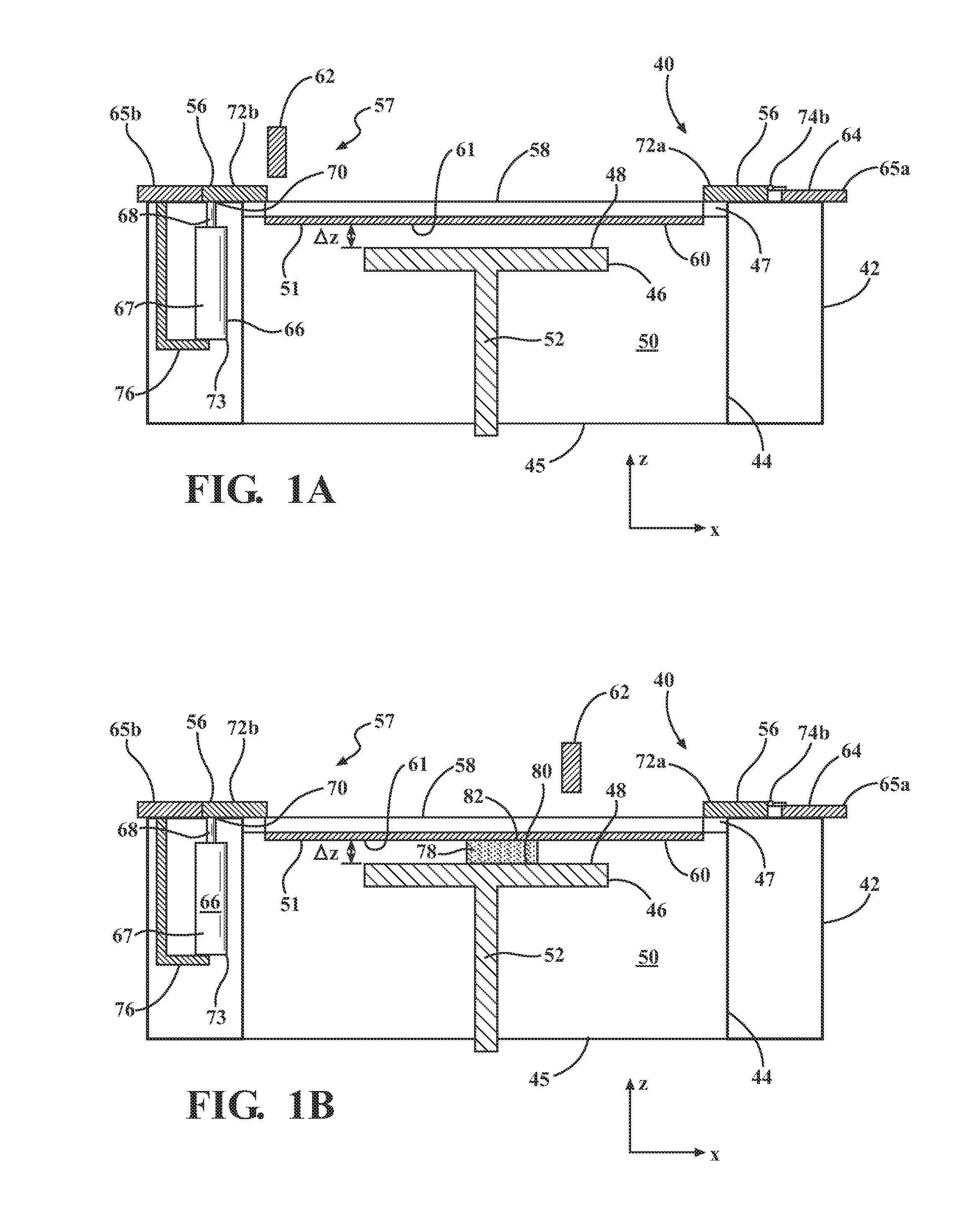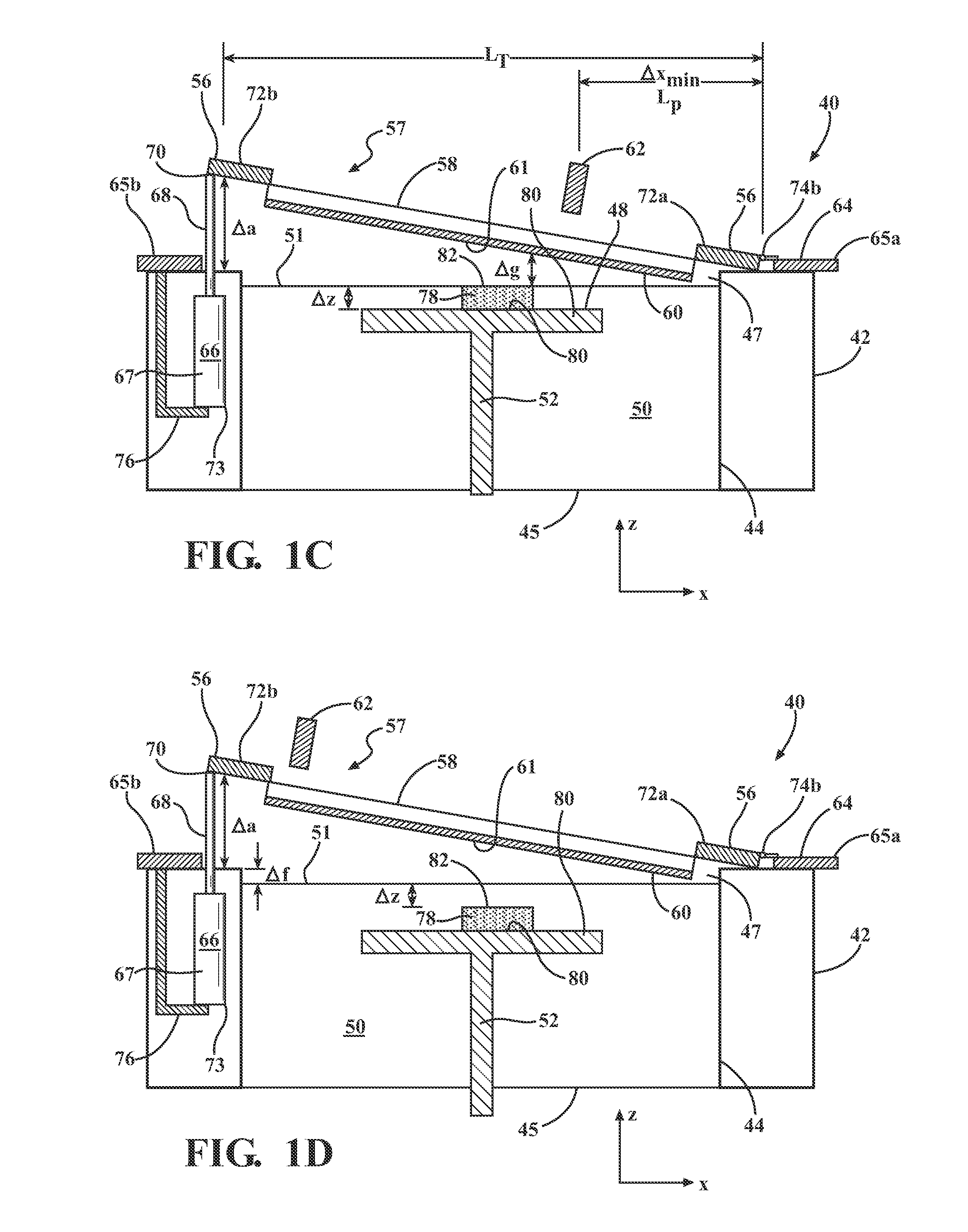Apparatus and method for forming three-dimensional objects using a tilting solidification substrate
a technology of solidification substrate and three-dimensional objects, which is applied in the direction of manufacturing driving means, manufacturing tools, manufacturing enclosures, etc., can solve the problems of increasing the susceptibility of parts to damage, undesirable delays in the production of objects, and bonding between newly exposed surfaces
- Summary
- Abstract
- Description
- Claims
- Application Information
AI Technical Summary
Benefits of technology
Problems solved by technology
Method used
Image
Examples
example 1
[0211]A 4 inch (x-axis) by 4 inch (y-axis) part is prepared using Envisiontec E-Denstone Peach on an apparatus that is configured similarly to the apparatus of FIGS. 4A-4E but for which the solidification substrate assembly 57 is not tilted. Peeling operations are carried out by moving the build platform 46 sufficiently downward to cause peeling and leveling (squeezing) operations are carried out by moving the build platform 46 upward to a distance of one layer thickness Δz from film 60. The object is built in 50 micron layers. Using the same materials and the dimensions, the object is also built on the apparatus of FIGS. 4A-4E with tilting. The time required to complete a squeezing operation (i.e., the time until the pressure measured by sensor 110 stabilizes at the reference value) is 45 seconds with the non-tilting implementation and 10 seconds with tilting. The full cycle for the solidification of a layer (including dropping the build platform, performing the “squeezing” or leve...
example 2
[0250]Six (6) full solid dental arches with a bottom palate are made using the apparatus of FIGS. 18-23C. The build envelope is approximately 10 inches by 6 inches (254 mm×152.4 mm). The arches are distributed evenly throughout the build envelope. The solidification substrate 88 is a transparent and translucent glass having a length (x-axis) of 11 inches and a width (y-axis) of 7 inches (279.4 mm×177.8 mm). The maximum x-y area of each arch is about 9 inches by 9 inches (229 mm×229 mm). The solidifiable material is a UV-curable, nanofilled material called E-Appliance, which is supplied by Envisiontec, Inc. of Dearborn Heights, Mich. The six (6) dental arches are built in layers of solidifiable material having a layer thickness (Δz) of 75 microns (0.075 mm).
[0251]Following the solidification of each of the first twenty (20) layers of the dental arches, a first tilting operation is carried out. The actuator shaft 68 is extended such that its distal end 70 travels a distance Δa of one ...
PUM
| Property | Measurement | Unit |
|---|---|---|
| Temperature | aaaaa | aaaaa |
| Viscosity | aaaaa | aaaaa |
| Time | aaaaa | aaaaa |
Abstract
Description
Claims
Application Information
 Login to View More
Login to View More - R&D
- Intellectual Property
- Life Sciences
- Materials
- Tech Scout
- Unparalleled Data Quality
- Higher Quality Content
- 60% Fewer Hallucinations
Browse by: Latest US Patents, China's latest patents, Technical Efficacy Thesaurus, Application Domain, Technology Topic, Popular Technical Reports.
© 2025 PatSnap. All rights reserved.Legal|Privacy policy|Modern Slavery Act Transparency Statement|Sitemap|About US| Contact US: help@patsnap.com



